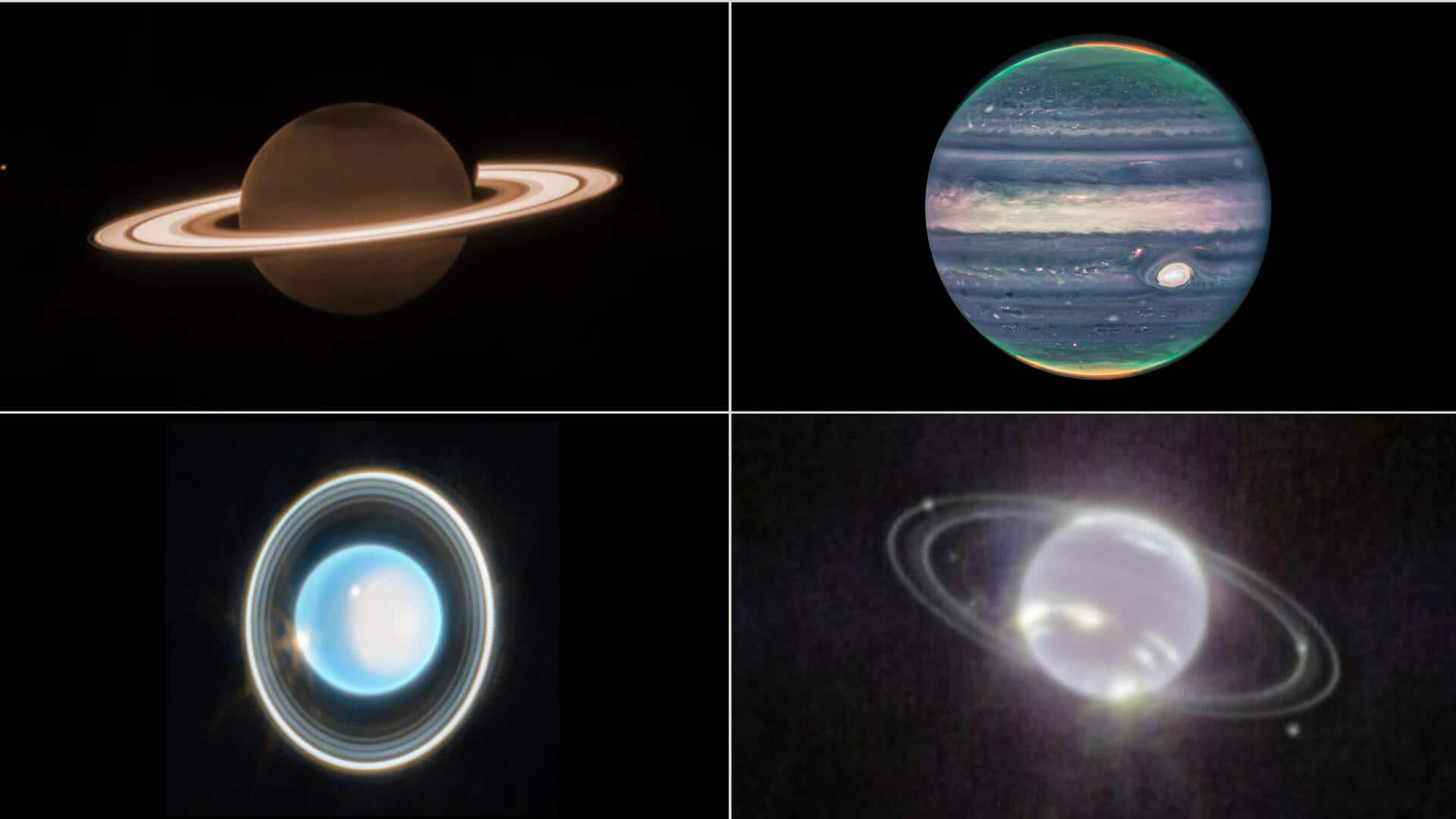
JWST completes stunning visual collection of solar system's giant planets
What's the story
NASA recently released a stunning new image of Saturn, depicting the planet's rings shining brightly against the blackness of space. The striking image was captured by the James Webb Space Telescope (JWST). With the addition of the ringed planet, the powerful space telescope has now captured all four gas giants in our solar system including Jupiter, Uranus, and Neptune.
Saturn
Saturn's rings are the main highlight of the image
Let's start with JWST's latest image of Saturn. It was part of an investigation to test the telescope's capacity to detect faint moons orbiting the planet. While the rings are the main highlight, Saturn itself appears dark without its characteristic dust bands in the image. The reason is Webb sees in near- and mid-infrared wavelengths of light, which aren't visible to the human eye.
Details
The image captures three of Saturn's moons
Webb's image reveals three of Saturn's moons—Dione, Enceladus, and Tethys—and sheds light on the planet's seasonal changes. What's hard to miss is that the planet's northern pole appears dark, possibly because of an unknown process affecting aerosols. Meanwhile, the edges around Saturn's disc appear bright. This could be due to methane fluorescence or tri-hydrogen emission or both. Further spectroscopic analysis could confirm this.
Jupiter
Jupiter was the first gas giant snapped by Webb
The first gas giant to be observed by Webb was Jupiter. In August last year, the telescope captured some stunning details of the planet including the Great Red Spot, a long-living storm that's so powerful it could consume Earth. What's interesting is the bright aurorae seen shining at Jupiter's poles. The planet's faint rings and its lesser-known moons, Amalthea and Adrastea are also seen.
Uranus
Webb observed Uranus earlier this year
In April, JWST took a look at Uranus, capturing 11 of the 13 known rings of the planet. The image also points to certain features seen over the planet's polar cap, which have not been as clearly noticed by other observatories before Webb. Webb also captured six of Uranus's 27 known moons, namely Ariel, Puck, Titania, Miranda, Oberon, and Umbriel.
Neptune
Webb gave unprecedented glimpses of Neptune in late September 2022
Webb gave us new glimpses of Neptune after nearly 30 years in late September 2022. The telescope gave unprecedented views of the planet's icy rings and captured seven of Neptune's 14 known moons. The key highlight was the bright band around the planet's equator. This feature has never been spotted before and researchers believe it is a sign of atmospheric circulation on Neptune.